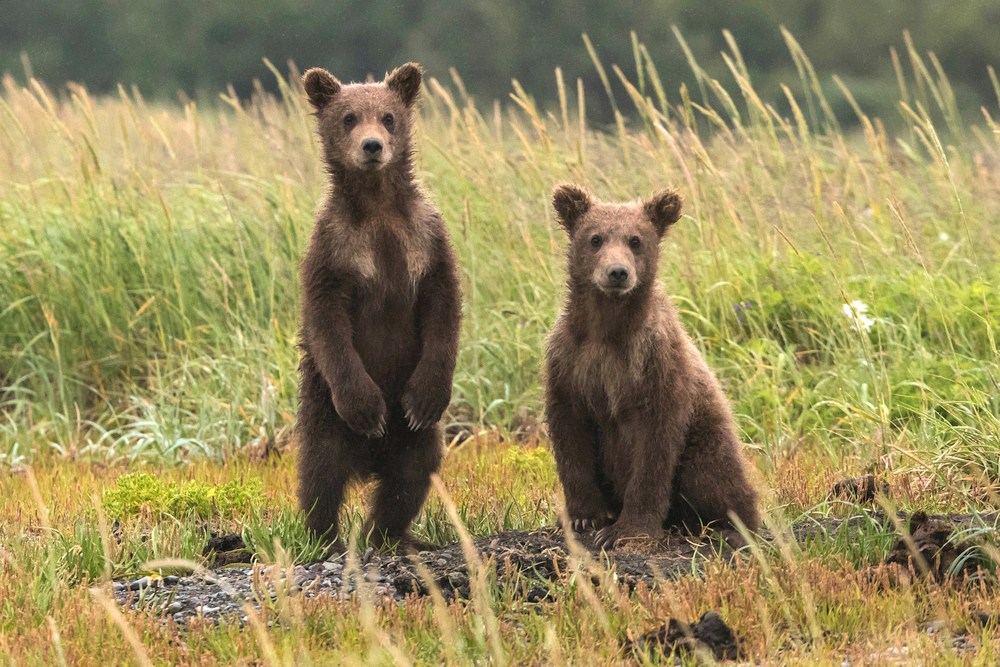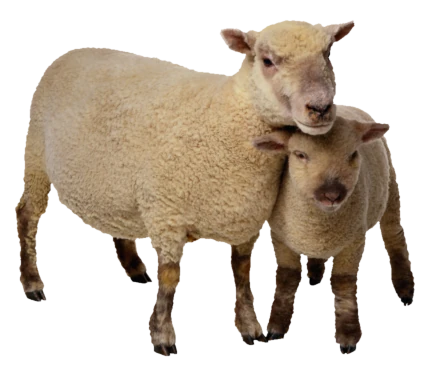Animal rights advocates believe that non-human animals should be free to live as they wish, without being used, exploited, or otherwise interfered with by humans.
The idea of giving rights to animals has long been contentious, but a deeper look into the reasoning behind the philosophy reveals ideas that aren’t all that radical. Animal rights advocates want to distinguish animals from inanimate objects, as they are so often considered by exploitative industries and the law.
The animal rights movement strives to make the public aware of the fact that animals are sensitive, emotional, and intelligent beings who deserve dignity and respect. But first, it’s important to understand what the term “animal rights” really means.
What are animal rights?
Animal rights are moral principles grounded in the belief that non-human animals deserve the ability to live as they wish, without being subjected to the desires of human beings. At the core of animal rights is autonomy, which is another way of saying choice. In many countries, human rights are enshrined to protect certain freedoms, such as the right to expression, freedom from torture, and access to democracy. Of course, these choices are constrained depending on social locations like race, class, and gender, but generally speaking, human rights safeguard the basic tenets of what makes human lives worth living. Animal rights aim to do something similar, only for non-human animals.
Animal rights come into direct opposition with animal exploitation, which includes animals used by humans for a variety of reasons, be it for food, as experimental objects, or even pets. Animal rights can also be violated when it comes to human destruction of animal habitats. This negatively impacts the ability of animals to lead full lives of their choosing.
Do animals have rights?
Very few countries have enshrined animal rights into law. However, the US and the UK do have some basic protections and guidelines for how animals can be treated.
The UK Sentience Bill
In 2021, the United Kingdom’s House of Commons introduced the Animal Sentience Bill. If passed, this bill would enshrine into law that animals are, in fact, sentient beings, and they deserve humane treatment at the hands of humans. While this law would not afford animals full autonomy, it would be a watershed in the movement to protect animals—officially recognizing their capacity to feel and to suffer, and distinguishing them from inanimate objects.
The US Animal Welfare Act
In 1966, the United States passed the Animal Welfare Act. While it is the biggest federal legislation addressing the treatment of animals to date, its scope is fairly narrow—the law excludes many species, including farmed animals, from its protections. The law does establish some basic guidelines for the sale, transport, and handling of dogs, cats, rabbits, nonhuman primates, guinea pigs, and hamsters. It also protects the psychological welfare of animals who are used in lab experiments, and prohibits the violent practices of dogfighting and cockfighting. Again, this law does not recognize the rights and autonomy of animals—or even their ability to feel pain and suffer—but it does afford non-human animals some basic welfare protections.
What are some examples of animal rights?
While few laws currently exist in the UK or US that recognize or protect animals’ rights to enjoy lives free from human interference, the following is a list of examples of animal rights that could one day be enacted:
- Animals may not be used for food.
- Animals may not be hunted.
- The habitats of animals must be protected to allow them to live according to their choosing.
- Animals may not be bred.
What’s the difference between animal welfare and animal rights?
Animal rights philosophy is based on the idea that animals should not be used by people for any reason, and that animal rights should protect their interests the way human rights protect people. Animal welfare, on the other hand, is a set of practices designed to govern the treatment of animals who are being dominated by humans, whether for food, research, or entertainment.
Do animals need rights? Pros and cons
The idea of giving animals rights tends to be contentious, given how embedded animal products are within societies such as the United States. Some people, including animal activists, believe in an all-or-nothing approach, where animal rights must be legally enshrined and animals totally liberated from all exploitation. On the other end of the spectrum are people whose livelihoods depend upon animal-based industries. Below are some arguments both in favor of and opposing animal rights.
Arguments in favor of animal rights
Should the rights of animals be recognized, animal exploitative industries would disappear, as would the host of environmental problems they cause, including water pollution, air pollution, greenhouse gas emissions, and deforestation.
Halting the widespread use of animals would also eliminate the systematic cruelty and denial of choice that animal industries perpetuate. The physical and psychological pain endured by animals in places like factory farms has reached a point many consider to be unacceptable, to say the least. Animals are mutilated by humans in several different ways, including castrations, dehorning, and cutting off various body parts, usually without the use of anesthetic.
Many species never see the outdoors except on their way to the slaughterhouse.
As their name suggests, concentrated animal feeding operations (CAFOs) pack vast numbers of animals in cramped conditions, often forcing animals to perpetually stand in their own waste. Many species—including chickens, cows, and pigs—never see the outdoors except on their way to the slaughterhouse. Recognizing animal rights would necessitate stopping this mistreatment for good.
Arguments against animal rights
Many people depend upon animal exploitation for work. On factory farms, relatively small numbers of people can manage vast herds or flocks of animals, thanks to mechanization and other industrial farming techniques. Unfortunately, jobs in industrial meatpacking facilities are also known to be some of the most dangerous in the US. Smaller farmers coming from multi-generational farming families more directly depend upon using animals to make a living and tend to follow welfare standards more judiciously. However, smaller farms have been decreasing in number, due to the proliferation of factory farms against which they often cannot compete.
Although people may lose money or jobs in the transition to animal alternatives, new jobs can be created in the alternative protein sector and other plant-based industries.
When did the animal rights movement begin in the US?
The modern day animal rights movement in the United States includes thousands of individuals and a multitude of groups who advocate for animals in a variety of ways—from lobbying legislators to support animal rights laws, to rescuing animals from situations of abuse and neglect. While individuals throughout history have believed in and fought for animal rights, we can trace back the modern, US-based animal rights movement to the founding of the American Society for the Prevention of Cruelty to Animals (ASPCA) in 1866. The group’s founder, Henry Burgh, believed that animals are “entitled to kind and respectful treatment at the hands of humans and must be protected under the law.” The organization worked with the New York City government to pass and enforce anti-cruelty laws that prevented the abuse of carthorses and provided care for injured horses. Since then, the ASPCA has expanded its advocacy across different non-human animal species—including farmed animals—and many more animal protection groups have sprung up, both locally and nationwide. Currently, there are over 40,000 non-profit organizations identified as animal groups in the US.
Why are animal rights important?
Animal rights are important because they represent a set of beliefs that counteract inaccurate yet long-held assumptions that animals are nothing more than mindless machines—beliefs popularized by western philosopher Rene Descartes in the 17th century. The perception of animals as being unthinking, unfeeling beings justified using them for human desires, resulting in today’s world where farmed mammals outnumber those in the wild, and the majority of these farmed animals are forced to endure harsh conditions on factory farms.
“
Farmed mammals outnumber those in the wild.
But the science is increasingly clear: The animals we eat (pigs, chickens, cows), the animals we use in laboratories (mice and rats), the animals who provide us with clothing, and those whose backs we ride upon have all been found to possess more cognitive complexity, emotions, and overall sophistication than has long been believed. This sophistication renders animals more susceptible not only to physical pain but also to the psychological impacts caused by the habitual denial of choice. Awareness of their own subjugation forms sufficient reasoning to rethink the ways animals are treated in western societies.
The consequences of animal rights
Currently, laws in the US and UK are geared toward shielding animals from cruelty, not giving them the same freedom of choice that humans have. (Even these laws are sorely lacking, as they fail to protect livestock and laboratory animals.) However, the animal rights movement can still have real-world consequences. Calls for animal liberation from places like factory farms can raise public awareness of the poor living conditions and welfare violations these facilities perpetuate, sometimes resulting in stronger protections, higher welfare standards, and decreasing consumer demand. Each of these outcomes carries economic consequences for producers, as typically it is more expensive for factory farms to provide better living conditions such as more space, or using fewer growth hormones which can result in lower production yields.
Of course, should the animal rights movement achieve its goals, society would look much different than it does today. If people consume more alternative sources of protein, such as plant-based or lab-grown meat, the global environment would be far less impacted. Clothing would be made without leather or other animal products; alternative sources, such as pineapple leather created from waste products from the pineapple industry, could replace toxic tanneries. The fur industry is being increasingly shunned, with fashion labels rejecting fur in favor of faux materials. Ocean ecosystems would be able to recover, replenishing fish populations and seafloor habitats. Today these are razed by bottom trawling fishing, resulting in the clear-cutting of corals that can be thousands of years old.
How you can advocate for animals
A world in which animals are free from human exploitation still seems far off, but we can make choices that create a kinder world for animals, every day. We can start by leaving animals off our plate in favor of plant-based alternatives—a choice that recognizes animals as the sentient beings that they are, and not products for consumption.
When we come together, we can also fight for better protections for animals in the US and around the world. There’s a robust movement to hold corporations accountability and end the cruelty of factory farming—an industry which causes immense amount of suffering for billions of animals. If you want to help end this suffering and spread compassion for animals, join our community of online animal activists and take action.

